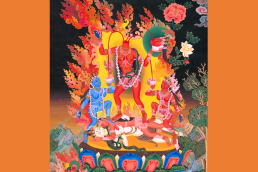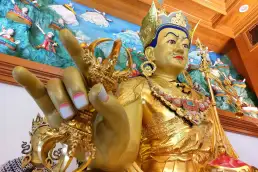Professor Douglas Wile’s Art of the Bedchamber (State University of New York Press) provides a fascinating look at a sex-positive culture’s classic treatises on sex. The authors of these works would have seen the wisdom of Synergy lovemaking.
Ten precepts of Chinese sexology
Wile’s rich anthology of Chinese texts about sexual health is extensive and scholarly. Here are ten precepts of ancient Chinese sexology culled from this work. Some are more plausible than others.
- “Careful regulation of sexual energy is the foundation of conjugal harmony”. Through exercising self-control and calming the passion, love actually increases, and one remains interested in one’s lover.
- Energy is lost through ejaculation. “Ejaculation brings enervation not relaxation, homeostatic holocaust not emotional catharsis”.
- Ejaculation, although depleting physical reserves, has the opposite effect on sexual desire. “After an immediate postcoital letdown, there is a rapid psychological rebound and an intensification of erotic interest [and wet dreams]”. This suggests a tactic for easing compulsive sexual behaviour: “When the ching is full one is free of lustful thoughts”.
- The activation of sexual energy (ching) floods the entire system with positive vital energy (ch’i). “These positive effects are immediately negated, however, if the energy elevated through sexual play is lost through [orgasm]”.
- The period from infancy to puberty is characterized by abundant energy, and no leakage of semen or menses (as well as the absence of sexual desire). This is wholeness.
- Yet following maturity, abstinence from intercourse, voluntary or enforced, produces both psychological and physiological aberrations. “By abstaining from intercourse the spirit has no opportunity for expansiveness, and yin and yang are blocked and cut off from one another”.
- Sexual potency declines with age. Some “believed that it is not age that causes sexual decline, but rather sexual mismanagement that causes aging”.
- Sexual energy can be transferred between lovers, enabling men or women to “steal” ching from each other. One can steal more from new partners than from constant intercourse with one partner. “Women are depleted significantly by orgasm and menses, but intolerably by childbirth…”.
- Man’s arousal time is faster than woman’s, but even he should warm up slowly and fully. “Only with full arousal is the semen secure”.
- “If the ching goes forth, it creates new life, but if it is retained, it gives life to one’s own body”, until finally reaching in the sexual alchemists the spiritual parthenogenesis of what [one text] calls “forming the holy fetus”.
Women through the centuries
Wile’s translated texts of Chinese sexual lore all make for interesting reading. For female readers, however, his masterful analysis of the changing Chinese views on the purpose of sex and the deteriorating role of women over the centuries may prove especially intriguing, if disheartening.
Early on, the Chinese taught that the path to mutual immortality for men and women is through a “combination of deep penetration, low arousal, and tan-t’ien visualizations”. The goal of the visualizations was to draw the energy from the energy centre just below the navel up through the heart into the crown centre. In this way, the combination of male and female energy was believed to give rise to a life-giving elixir, and eventually the “holy fetus”.
Sadly, the tao of man and woman achieving immortality together gradually eroded. The nadir was the belief that one partner could “steal” her/his partner’s prized ching by inducing the other’s orgasm while refraining oneself. The Chinese recognized that orgasm is draining, even for women, and somewhere along the line someone promoted the dubious idea that if one partner were losing, the other must have been gaining.
Bedchamber’s texts describing solo practices for both men and women counsel avoidance of orgasm for both.
Nourishing the brain
The concept of “returning the ching to nourish the brain” constitutes the centrepiece of Chinese sexual practice according to Wile. This language describes the feelings of wellbeing and increased energy after Synergy lovemaking. Given the neuroendocrine events induced by orgasm, it may well be that brain chemistry improves when one avoids the highs and lows of conventional orgasm while consciously nurturing each other during gentle lovemaking. The resulting sense of wholeness and satisfaction may well reflect improved brain chemistry.
Sadly, the Chinese, like the Tibetan Buddhists to the west, departed from this shared goal in favour of the selfishness of men using women’s sexual response for their own ends. Has the resulting karmic dance – as lovers exchange roles lifetime after lifetime – caught humanity in a downward spiral?
Perhaps it’s time to put yin and yang together again unselfishly, and restore the practice of mutual sexual/loving cultivation for the highest possible ends.
Also of possible interest:



